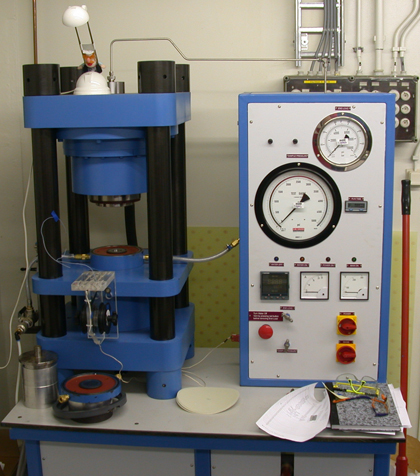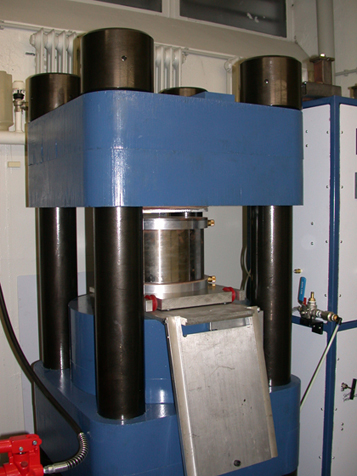My research revolves around the use of experimental high-pressure, high-temperature apparatus to solve mineralogical and petrological problems in Earth and (exo)planetary Science.
The high-pressure lab at VU University Amsterdam was established in 2006 and contains a University of Bristol end-loaded piston cylinder press (for experiments between 1 and 3 GPa),
a QuickPress (for experiments between 0.4 and 4 GPa), a 800 ton multi-anvil press (for experiments up to 25 GPa), and a 1 atm CO/CO2 gas mixing furnace (for experiments at controlled oxygen fugacity conditions).
With the help of these, my group studies phase petrology and the systematics of element and isotope partitioning between silicate minerals, silicate melts and/or or iron alloy melts.
We are also using synchrotron X-ray diffraction and absorption techniques at the European Synchrotron Radiation Facility (ESRF) and the Advanced Photon Source (APS, Chicago),
for in situ measurements of physical and chemical properties of minerals and melts at high pressure and temperature.


Current research interests of the group include
Experimental studies of the major and trace element evolution of the Moon
Experimental studies of the history of water and other volatiles in the Moon
Remote sensing studies of the surface of the Moon
Combined experimental and numerical studies of the interior evolution of Mercury
Element and stable isotope partitioning between metal and silicate to constrain core formation in the Earth, Moon, Mars, Mercury and asteroids
Constraints on light element cycles during the formation and early evolution of rocky exoplanets
Experimental and observational constraints on the evaporation of hot rocky exoplanets
Funding for these projects has been provided by the Netherlands Organisation for Scientific Research (N.W.O.), European Science Foundation (E.S.F.), Royal Netherlands Academy of Arts and Sciences (K.N.A.W.), China Scholarship Council (C.S.C.).
More information about these projects and the people that are doing the actual hard work can be found on the team member pages
Back to the index

